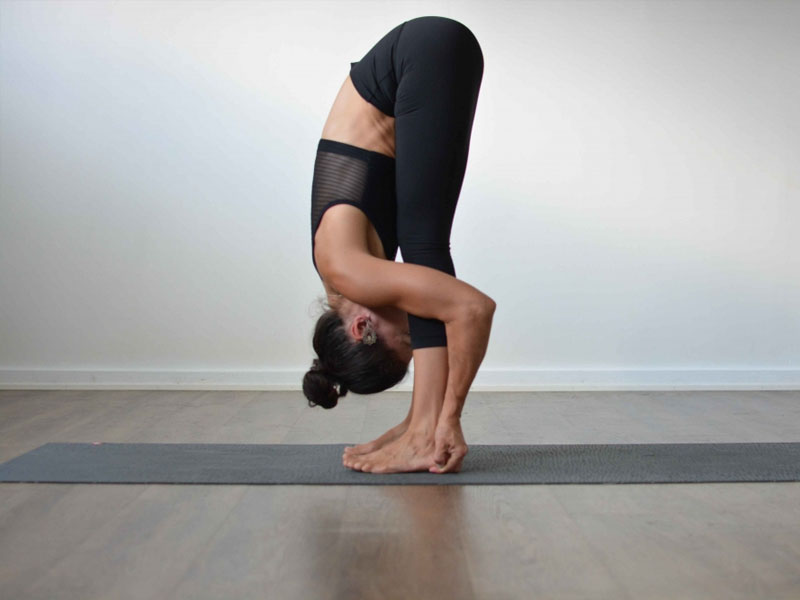Pada means the foot. Hasta means the hand. This posture is done by. bending forward and standing on one’s hands.
Technique
1. Stand in Tädisana.Spread the legs a foot apart.
2. Exhale, bend forward and without bending the legs at the knees insert the hands under the feet so that the palms touch the soles.
3.Keep the head up and make the back as concave as possible. Do not slacken the grip at the knees and take a few breaths in this position.
4. Now exhale, and move the head in between the knees by bending the elbows and pulling the feet up from the palms. Stay in the pose for about 20 seconds with normal breathing.
5 Inhale, raise the head and come back to position 2 , with the head well up. Take two breaths,
6. Inhale, stand up and return to Tädäsana.
Effects of Padangusthasana and Pädahastāsana
The second isana is more strenuous than the first, but the effects of both are the same. The abdominal organs are toned and digestive juices increase, while the liver and spleen are activated. Persons suffering from a bloating sensation in the abdomen or from gastric troubles will benefit by practising these two asanas.
Slipped spinal discs can only be adjusted in the concave back position . Do not bring the head in between the knees if you have a displaced disc. I have experimented with persons suffering from slipped discs and the concave back position proved a boon to them. It is imperative to get guidance from a guru (master) before trying this pose, because it may not be possible to achieve the concave back position immediately. One has to master other minor poses before attempting this one.
 |
Malvika Tiwari, |


